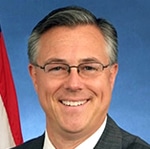 The SMART Transportation Division’s legislative officers attended a public-input meeting held by the U.S. Department of Transportation May 29 to study truck size and weight limits.
The SMART Transportation Division’s legislative officers attended a public-input meeting held by the U.S. Department of Transportation May 29 to study truck size and weight limits.
Written testimony from the legislative office included the complete survey results from a poll conducted by the SMART TD in Indiana and Missouri regarding truck size and weight limits.
A portion of that survey was published in the May 2013 SMART TD News.
In written testimony submitted to the DOT, Alternate National Legislative Director John Risch stated: “By very large margins, these surveys show that the public at large opposes any increase in truck size and weight.
“Our labor union opposes increasing the size and weight of trucks as well because doing so will divert traffic from privately owned and maintained railroads to our already overburdened publicly built and maintained highways.
“Bigger trucks will increase highway congestion and further damage our inadequate infrastructure, and will put railroads at a further competitive disadvantage than they already are.
“Transporting freight by rail is more fuel efficient, saves our nation’s highways and produces far less pollutants than does transporting freight by trucks.
“Public policy decisions should encourage more freight to be moved by rail, not less.”
To view the SMART TD’s complete polling results from the Indiana and Missouri surveys, click here.
To view the DOT’s survey worksheets, click here.
 A huge fire outside Baltimore, triggered by the collision of a freight train carrying chemicals and a trash truck, raged for 10 hours before being brought under control, officials said early Wednesday.
A huge fire outside Baltimore, triggered by the collision of a freight train carrying chemicals and a trash truck, raged for 10 hours before being brought under control, officials said early Wednesday.